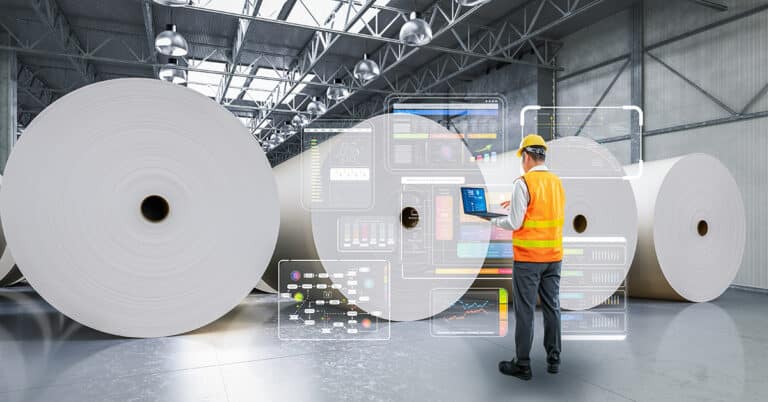Capping and filling machines are critical in packaging and production lines for many industries. They help optimize product integrity, speed, and consistent packaging results across sectors such as food and beverage, pharmaceuticals, and consumer goods. The machinery is designed to prevent overfilling or underfilling, but to achieve optimal performance, you must look after the equipment according to a carefully designed preventive maintenance program.
How can consistent machine maintenance reduce downtime and improve product quality? You can avoid unexpected repairs and keep your equipment operating at peak efficiency. Conversely, if you neglect to follow industry best practices for maintenance, there will likely be a price to pay. Poorly maintained machines may cause misfills, leaky containers, contamination, or production slowdowns. Therefore, maintaining your equipment is instrumental for ensuring your facility complies with hygiene and regulatory standards.
What follows is a comprehensive guide on maintenance for filling and capping machines, aimed at ensuring the operational efficiency, safety, and longevity of the machines you rely on.
Common types of capping and filling machines
For context about the critical need for ongoing maintenance, here is an overview of the primary types of bottle filling machinery in use today:
- Volumetric
- Gravity
- Capping machinery (screw, snap, vacuum)
Filling machine variations:
- Volumetric fillers (piston pumps, flow meters)
- Vacuum/gravity fillers for specific product viscosities
- Overflow fillers ensuring uniform fill levels
Capping machine variations:
- Rotary vs. inline cappers
- Torque-based screw cappers
- Snap-on or press cappers for certain container types
Because each filling machine part can potentially fall out of alignment or fail to operate according to specification, it’s easy to see why bottling machine maintenance is paramount. Also noteworthy is that different designs have unique parts (pumps, nozzles, chucks, torque heads, etc.) that may require specialized upkeep.
Common capping and filling machine issues
As you prepare your maintenance schedule, it makes sense to be aware of typical issues that arise from capping/filling operations. This is the case whether you perform these tasks or rely on outsourced maintenance services from ATS. You should pay close attention to how environmental and product factors affect machine wear. Examples include dust in the facility and filling bottles with sticky liquids. Here are some common issues that cause problems:
- Clogged fill nozzles or valves: These parts are particularly prone to wear, especially when filling containers with viscous or sugary products. Therefore, regular maintenance in the food processing industry is crucial for ensuring smoother operations.
- Worn seals and gaskets: They can lead to leaks or incorrect fill volumes. Underfilling poses a significant risk to customer satisfaction, while overfilling results in profit loss. When filling pharmaceutical containers, precise control and accuracy are essential to ensure the safety and health of patients. Therefore, preventive maintenance of your liquid filling machine is crucial to avoid the dangers associated with improperly filled containers.
- Misaligned capping heads: When this occurs, you can anticipate the machinery will cause cross-threading or lead to loose caps.
- Sensor and control failures: Inaccurate fill levels can occur if sensors drift out of calibration or if the programmable logic controller (PLC) logic becomes outdated. This underscores the necessity of keeping up with software updates. A PLC plays an important role in modern machine health monitoring. What’s more, PLCs are invaluable for helping you crunch data to support your food and beverage predictive maintenance efforts.
- Corrosion and contamination risks: Food or pharmaceutical lines must meet stringent hygiene standards, as residue buildup can hamper performance and violate compliance standards. The last thing you’d want is an inspector to discover issues with your filling and capping equipment due to inadequate maintenance.
Preventive maintenance checklist for filling machines
Which tasks help provide consistent operation and reduce unplanned breakdowns of filling machines? And how often should you perform these tasks? Here’s a checklist to help you perform ongoing maintenance for filling machines:
Daily/weekly:
- Inspect and clean fill nozzles, capping chucks, and contact points to remove product buildup.
- Check oil or lubrication points on moving mechanisms, such as conveyor chains and gears, as recommended by the OEM guidelines.
- Verify sensor alignment and readouts for correct fill volume or torque settings.
- Observe any unusual vibrations or noises in pumps, motors, and capping heads.
Monthly/bi-monthly:
- Replace or clean filters (air and fluid) if applicable, such as compressed air lines or vacuum systems.
- Calibrate the fill volume/tolerance, checking for variations from the target.
- Check the torque settings on all capping heads. Re-lubricate or adjust them as needed.
- Inspect all belts, pulleys, or drives for wear, tension, and alignment.
Quarterly/seasonally:
- Perform a deeper cleaning of machine internals, removing hidden residue and product buildup.
- Evaluate the condition of the machine’s seals, O-rings, and gaskets. Replace any parts that show cracks or deformation.
- Test backup sensors or redundancy features to confirm their readiness.
- Document and compare data from production rates, miscap or misfill counts to spot potential worrisome trends.
Annual/off-season:
- Overhaul or replace major wear items, such as pumps and motors, per the OEM’s recommended intervals.
- Update or upgrade machine software/firmware for automation or data logging features. Doing so will help keep your equipment running as efficiently as possible.
- Keep a maintenance log capturing all repairs, inspections, and improvements for compliance and traceability.
Predictive maintenance and machine health monitoring
Modern sensor technology and data analytics solutions are vital for supporting your filling machine maintenance schedule. Sensors help provide a torrent of information about automatic filling machine equipment temperature, vibration, pressure, and motor current. Analyzing this data can reveal early signs of bearing wear or torque drift in capping stations.
Why implement predictive maintenance in packaging lines? You’ll reduce the total cost of ownership and get a much better return on investment (ROI) when you engage in predictive maintenance. Fewer line stoppages and extended equipment life contribute to those rewards, and you can also expect stable product output and improved process consistency.
The machine health solutions and reliability programs that ATS offers can help you reduce downtime and ensure correct fill/cap rates. We’re known in the industry for assisting companies with improvements to their methods for scheduling planned maintenance.
Connect with ATS today for help maintaining your capping and filling machines
Regular filling machine inspections and maintenance can help you stay on top of many tasks, including equipment calibration. We cannot overemphasize the importance of setting up a preventive maintenance schedule for your automatic bottle labeling, capping and filling machines.
Reach out to consult with our experts about pharmaceutical or food and beverage predictive maintenance. We pay attention to every detail, including advising you on keeping sufficient levels of spare parts on hand so you can avoid disruptions when parts must be repaired or replaced.
Disciplined capping/filling machine maintenance is essential in modern production lines. To that end, you should develop a structured checklist, and make sure your team performs daily checks on the equipment to verify it’s operating according to specifications. It’s also prudent to analyze advanced sensor data, as it’s difficult for human workers to capture so much vital information on their own. Do you need help understanding and using the information from your equipment? The professionals at ATS know how to analyze data from filling machines to keep systems running smoothly. Our planned preventative maintenance (PPM) experts have years of experience supporting facilities looking to optimize their capping/filling machines. We can help with regular maintenance and can even provide workforce solutions to help with tasks such as industrial calibration services.
To learn more about our approach to liquid filling machine maintenance or to consult with us about specialized machine health programs, predictive maintenance solutions, or training to elevate your capping/filling equipment performance, please contact us today.






